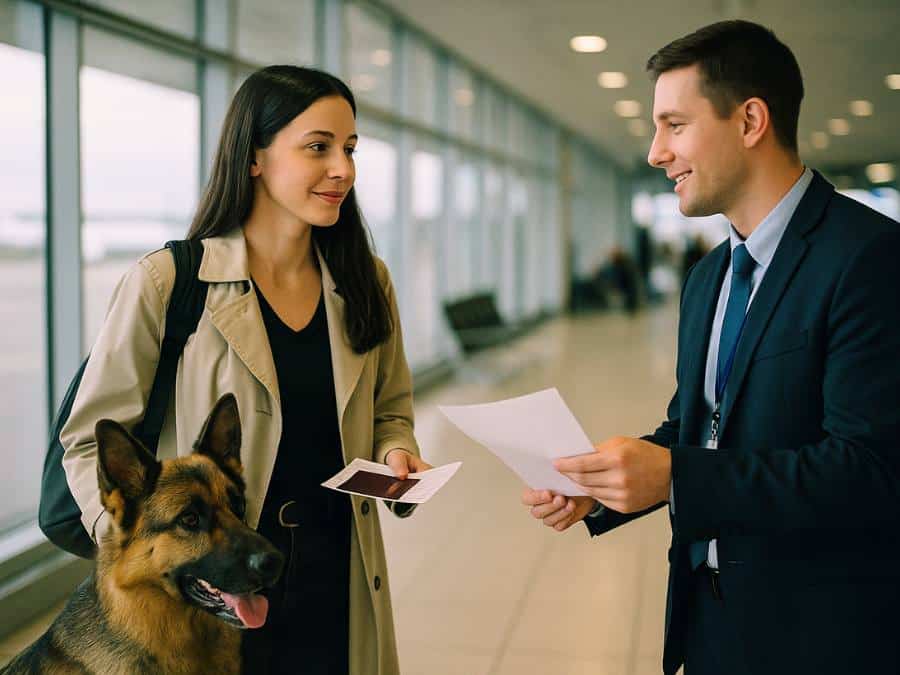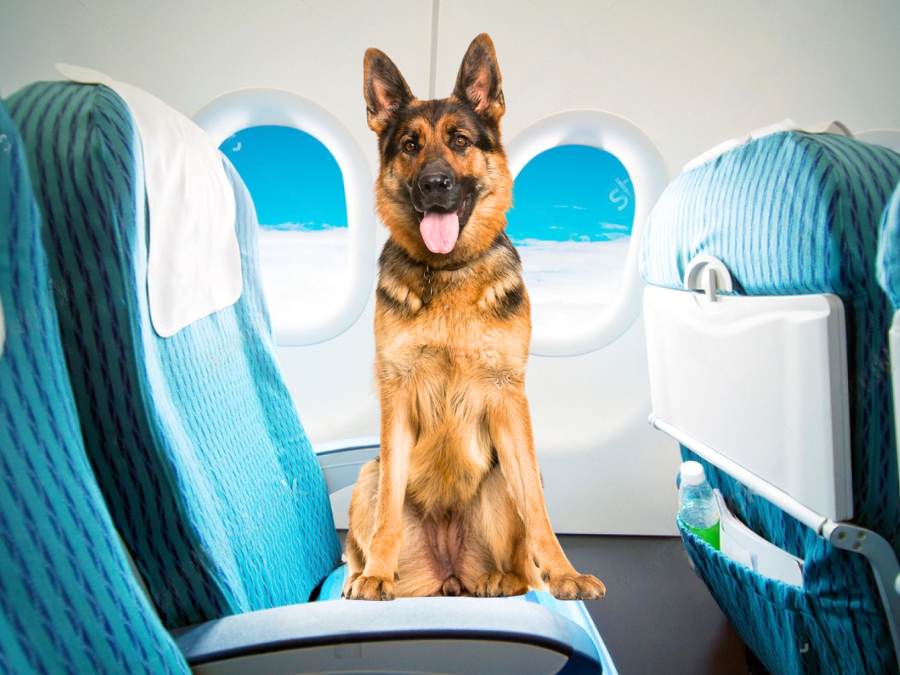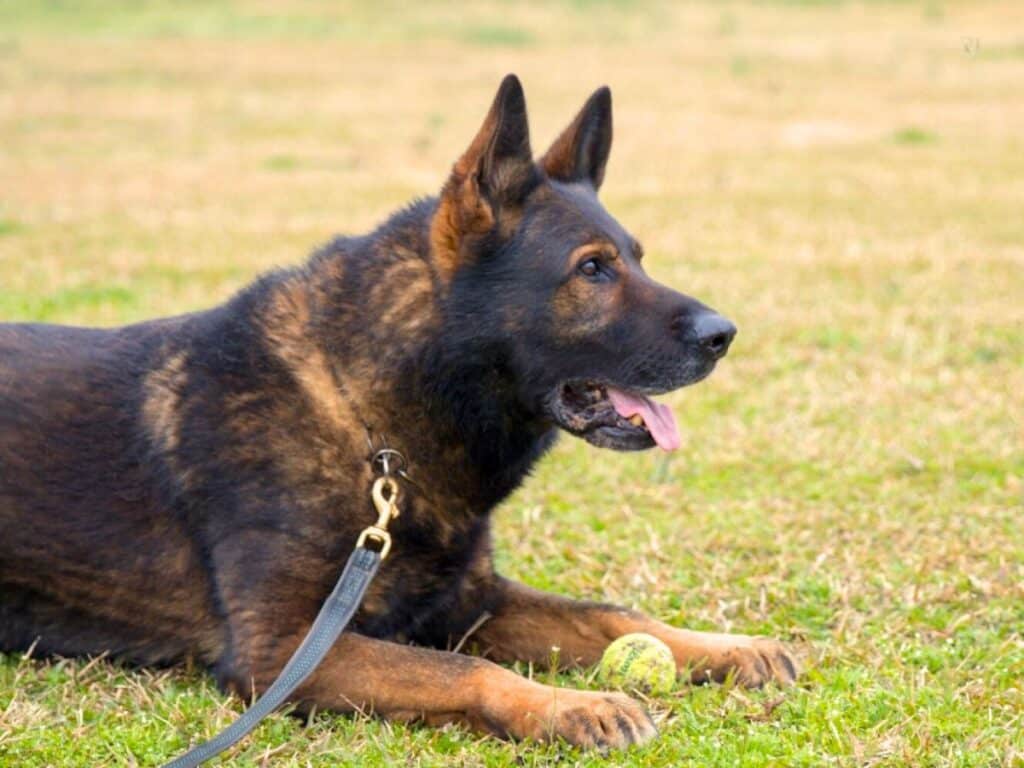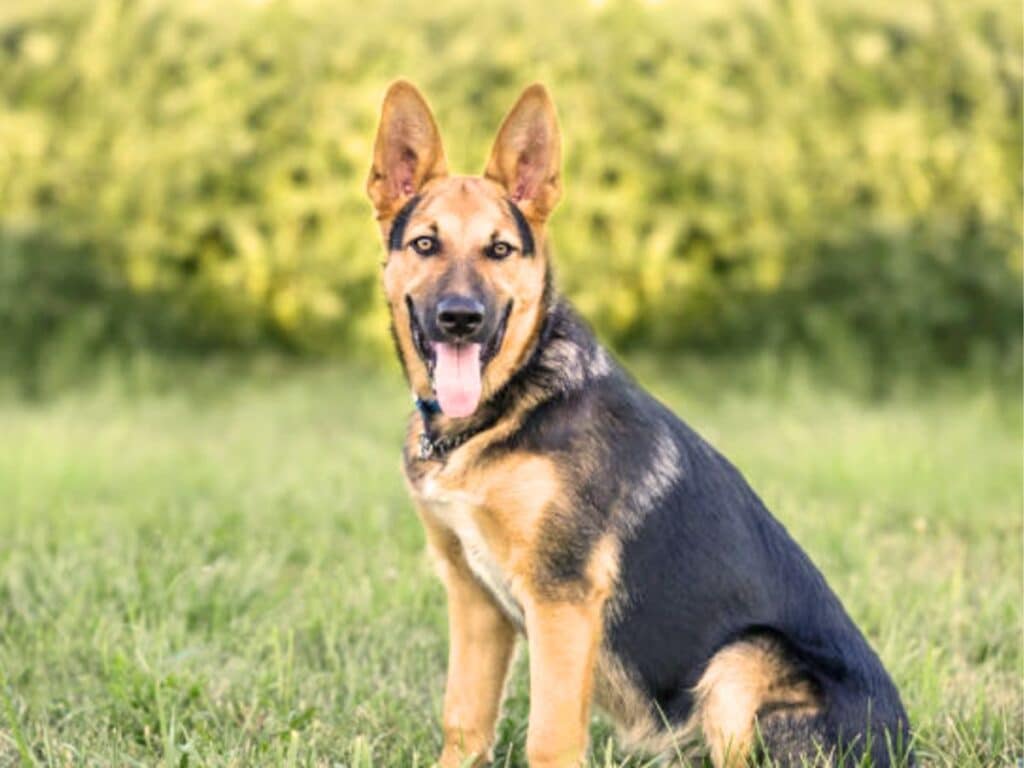Flying with a German Shepherd requires careful planning and consideration. These loyal and intelligent companions often become an integral part of our families, and leaving them behind during travel is not always an option or desire.
However, the logistics of air travel with a large dog are significantly more complex than simply booking an extra seat.
This post aims to guide you through the essential steps, from understanding airline policies to post-flight care, ensuring both you and your furry friend have a smooth and stress-free journey.
Understanding Airline Policies
When planning to fly with a German Shepherd, the first step is to thoroughly research and understand the airline policies regarding pet travel.
This is crucial as policies can vary significantly between airlines, especially for large breeds that cannot travel in the cabin. Here are the key areas to focus on:
Airline-Specific Pet Policies
- Research Early: Start by visiting the airline’s official website or contacting their customer service. Look for a section dedicated to pet travel; it should provide comprehensive details on their requirements and restrictions.
- Breed and Size Restrictions: Some airlines have specific restrictions on breeds and sizes, particularly for dogs traveling in the cabin. While German Shepherds are generally too large for cabin travel, it’s essential to know any additional restrictions for cargo travel.
Cabin vs. Cargo Travel
- Travel Options: Most airlines will require a German Shepherd to travel in the cargo hold due to their size. These dogs essentially fly as checked bags on the same flight as you or unaccompanied, as shipping cargo, sometimes called manifest cargo or air freight.
- Temperature and Pressure-Controlled Environment: Ensure the cargo area is temperature and pressure-controlled, a critical factor for your dog’s health and comfort during the flight.
Fees and Documentation
- Costs: The cost of flying with a pet can vary widely. Be clear on the fees, including any additional charges for oversized crates or special handling.
- Required Documentation: Airlines typically require health certificates, proof of vaccinations, and sometimes a fitness-to-fly certificate from a veterinarian. Gather this information well in advance of your flight to avoid any last-minute issues.
Using a dedicated pet shipping company is another way to go. You can find one at the International Pet and Animal Transportation Association, an industry organization.

Pre-Flight Preparations
After understanding the airline policies, preparing for the flight is the next critical step. This involves ensuring your German Shepherd is healthy, selecting the right travel crate, and getting your pet accustomed to it.
Health and Safety Checks
- Veterinary Visit: Schedule a check-up with your vet to ensure your dog is up-to-date on vaccinations and healthy for travel. Discuss any concerns about flying, especially if your dog has never flown before.
- Microchipping and Identification: If not already done, consider microchipping your German Shepherd. Ensure all ID tags are updated with current contact information.
Choosing the Right Crate
- Size and Specifications: The crate should be large enough for your dog to stand, turn around, and lie down comfortably. Follow airline specifications for crate materials, ventilation, and labeling.
- Comfort Items: Include familiar items in the crate, like a favorite toy or blanket, to help soothe your pet during the flight.
Training for Crate Comfort
- Gradual Introduction: If your dog is not used to a crate, start training well in advance of your trip. Encourage spending time in the crate with positive reinforcement.
- Mock Travel: Simulate the travel experience by increasing crate time and introducing common sounds of travel to help desensitize your pet to the noises and movements of a flight.
On the Day of the Flight
The day of the flight will be stressful for both you and your pet. Here’s how to manage:
Last-Minute Checks and Documentation
- Documentation: Double-check that you have all required documents, including health certificates and identification for your dog.
- Crate and Comfort: Ensure the crate is properly labeled with your contact information and that comfort items are securely placed inside.
Airport and Pre-Flight
- Exercise: Give your German Shepherd plenty of exercises before heading to the airport to help them relax during the flight.
- Pet Relief Areas: Familiarize yourself with the location of pet relief areas at the airport for one last stop before check-in.
Check-In and Security
- Early Arrival: Arrive at the airport early to allow extra time for pet-related procedures at check-in and security.
- Check-In Process: Be prepared for the check-in process, which may require inspection of your pet and the crate to ensure compliance with airline policies.
In-Flight Tips
Ensuring your German Shepherd’s comfort and safety during the flight is paramount. Since you’ll be separated, understanding how to manage this part of the journey is essential for their well-being.
Managing Comfort and Anxiety
- Familiar Scents: A blanket or toy with familiar scents can provide comfort to your pet during the flight. This can help reduce anxiety caused by the unfamiliar environment and sounds.
- Calming Supplements: Consult with your veterinarian about the possibility of using calming supplements or pheromone sprays that can help soothe your dog’s nerves.
Feeding, Hydration, and Avoiding Accidents
- Feeding Schedule: Avoid feeding your German Shepherd right before the flight to minimize the risk of nausea and accidents. A light meal 4-6 hours before the flight is advisable.
- Hydration: Ensure your dog has access to water. Special water dishes that prevent spills are a must-have in the crate.
- Absorbent Materials: Line the crate with absorbent bedding to help manage any accidents during the flight.
Communication with Airline Staff
- Informing the Crew: Make sure the check-in staff and flight crew are aware that your German Shepherd is traveling in the cargo hold. They can take special care to ensure the hold is properly pressurized and temperature-controlled. The ASPCA recommends you tape a small bag of food outside the kennel/crate so airline workers can feed your dog.
- Contact Information: Provide clear contact information on the crate and to the airline staff in case of any issues or delays during the flight.
Arrival and Post-Flight Care
After landing, your primary focus will be on reuniting with your German Shepherd and ensuring their comfort and health post-flight.
Navigating the New Airport
- Pet Relief Areas: Before landing, research the layout of your destination airport to locate pet relief areas. This will be one of the first stops after reunion.
- Customs and Import Regulations: If you’re flying internationally, be prepared for customs procedures and any specific pet import regulations.
Post-Flight Health Check
- Monitoring: Observe your dog closely for any signs of stress or illness after the flight. Changes in behavior, appetite, or energy levels can indicate discomfort or health issues.
- Veterinary Visit: Consider a post-flight check-up with a veterinarian, especially after long flights or if any health concerns arise.
Adjusting to the New Environment
- Routine: Reestablish your German Shepherd’s routine as quickly as possible, including feeding, walking, and playtime schedules.
- Exploration: Allow your dog to gradually explore the new environment, providing comfort and reassurance as they adjust.
Frequently Asked Questions
1. Can you fly with a German Shepherd?
Yes, you can fly with a German Shepherd, but it requires careful planning and adherence to airline policies. Most airlines allow pets to travel, but due to their size, German Shepherds will likely need to fly in the cargo hold rather than in the cabin.
It’s essential to check with your chosen airline well in advance of your trip to understand their specific requirements for pet travel, including crate specifications, health documentation, and fees.
2. Can my German Shepherd fly in the cabin with me?
Unfortunately, most airlines do not allow German Shepherds to fly in the cabin due to their size.
Airlines have strict size and weight limits for pets traveling in the cabin, typically allowing only small dogs that can fit comfortably in a carrier under the seat in front of you.
German Shepherds, being a large breed, would therefore need to travel in the cargo hold, where arrangements are made to accommodate larger pets.
3. How stressful is flying for German Shepherds?
Flying can be stressful for German Shepherds, as it is for most animals. The level of stress experienced depends on various factors, including the dog’s temperament, the duration of the flight, and how well they are accustomed to their travel crate.
The unfamiliar environment, noises, and handling by strangers can contribute to anxiety. However, you can minimize stress by thoroughly preparing your dog for the journey.
This includes crate training, using comforting items like favorite toys or blankets, and potentially consulting with a veterinarian about safe ways to reduce anxiety.
Ensuring your German Shepherd is well-exercised before the flight and maintaining a calm demeanor yourself can also help ease their stress.
4. Is it safe for German Shepherds to fly?
Yes, it is generally safe for German Shepherds to fly, provided that certain precautions are taken.
Airlines have specific protocols in place to ensure the safety and well-being of pets traveling in the cargo hold, which is pressurized and temperature-controlled just like the cabin.
Safety measures include using an airline-approved crate, ensuring your dog is healthy and fit to fly based on a vet’s assessment, and adhering to all airline requirements regarding pet travel.
While flying is considered safe, it’s important to evaluate your German Shepherd’s health, age, and temperament when deciding whether air travel is the best option.
Resources on How to Fly With a German Shepherd
- Kennel fact sheet, International Air Transport Association
- Flying with pets, Federal Aviation Administration
- Plane talk: Traveling with animals, U.S. Department of Transportation
- Traveling with your pet FAQ, American Veterinary Medical Association
- Travel safely with your pet, The Humane Society of the United States
Final Remarks
Flying with your German Shepherd can be a daunting prospect. However, with thorough preparation, understanding of airline policies, and careful attention to your dog’s needs, it’s entirely possible to make the experience as stress-free as possible for both of you. From selecting the right crate to ensuring your pet’s comfort during and after the flight, each step plays a vital role in the journey’s success.
FURTHER READING:




